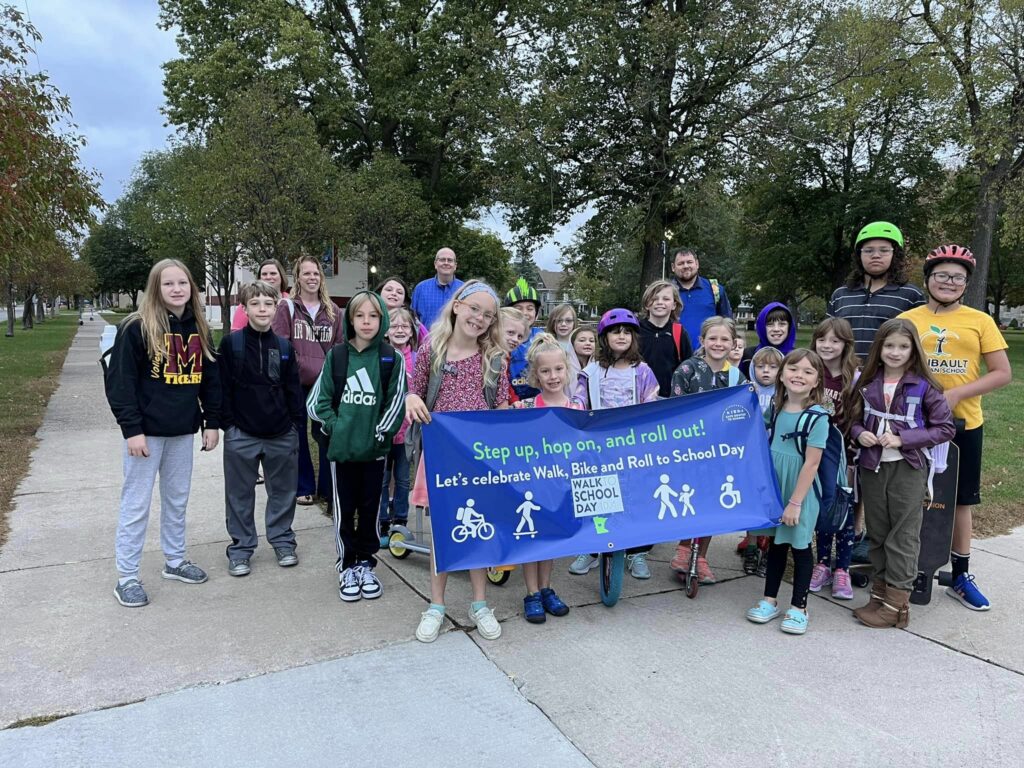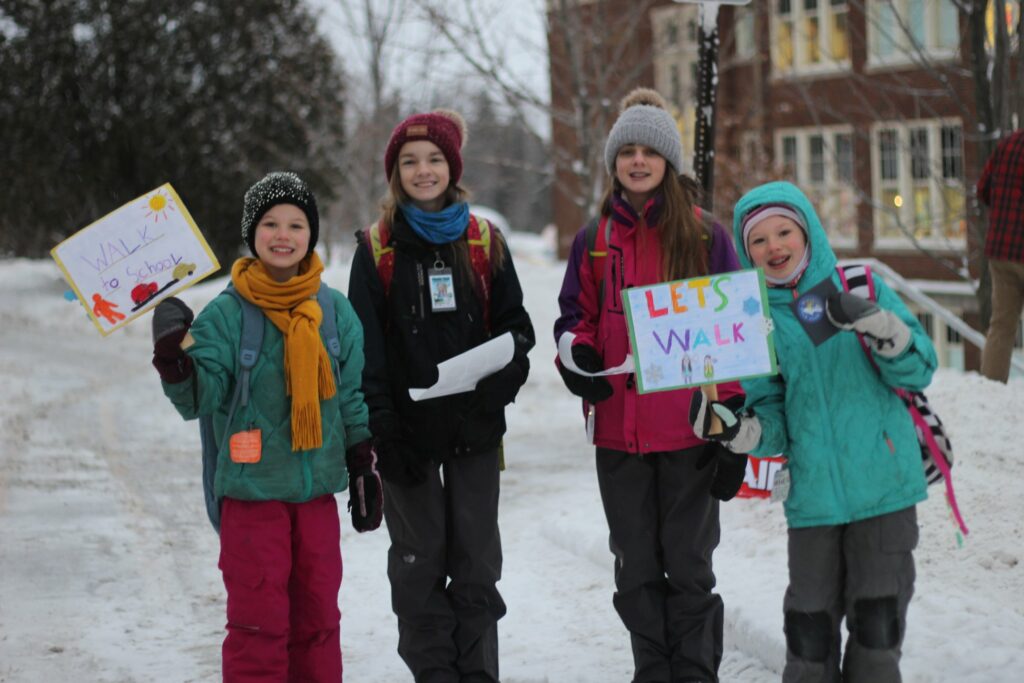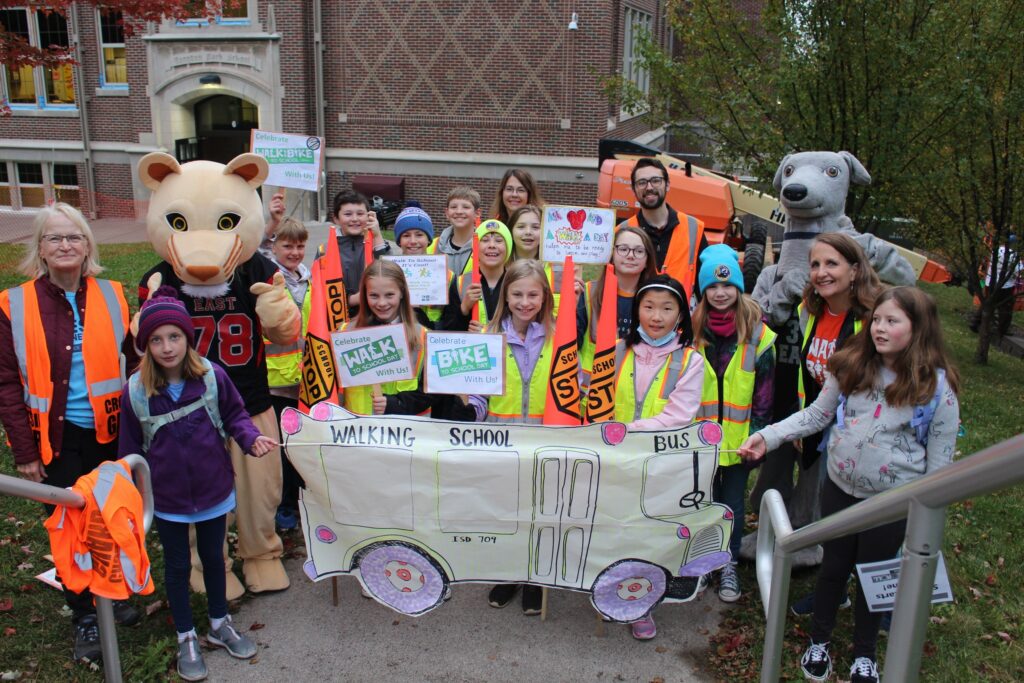Getting Started for Parents
Research shows that exercise, including walking and biking, helps kids with brain development and long-term health. Of course, Safe Routes to School programs also offer plenty of other benefits to your school and community! The resources on this page will help parents start or get involved in Safe Routes to School programs so that children—and their classmates—can walk and bike to school safely.
Parent involvement in Safe Routes to School
Every successful Safe Routes to School program has strong parent champions: those who recognize the benefits of Safe Routes to School and are willing to take the necessary steps to create a more walkable and bikeable school community. Parents can help develop Safe Routes to School programs by providing insight on parent concerns, facilitating peer-to-peer conversations with other parents and assisting in identifying barriers to walking and bicycling along school routes. To start a successful and long-lasting program, it is important to assemble a Safe Routes to School Team made up of school staff, parents and community members. The following resources can help you gather your team and start working on an Safe Routes to School plan at your school!
- Starting a Program Miniguide –This step-by-step guide from the National Center for Safe Routes to School outlines the process for starting, implementing and maintaining a Safe Routes to School program at your school, including how to assemble a diverse Safe Routes to School Team.
- Stakeholders guide helps identify who can help, what they bring to the team, and what they will get for participation.
Organize events during Walk or Bike to School Day
Walk to School Day and Bike to School Day events are a great way to launch or grow a Safe Routes to School program. These events show kids how fun it can be to walk to school with their friends, and may help you identify parents and staff who may be interested in doing more. Tips on organizing an event:
- Register for Walk and Bike to School Day – The Minnesota Department of Transportation supports schools holding Walk to School Day and Bike to School Day with encouragement ideas, give away items, and educational campaigns. Register at walkbiketoschool.org.
- Walk and Bike to School Events Tip sheet – This three-page guide provides ideas for planning a successful Walk or Bike to School Day. It is recommended to start small with an event and build on its success next year.
- Involving Parents in Walking and Biking events – Learn about the many ways parents can be involved in Safe Routes to School events.
Organize a Walking School Bus
Walking to school with a group of students and an adult chaperone is a fun way to get exercise and a safer way to get to school. Parents are often the lead organizers of walking school buses – a group of students with adult leaders that walk to and from school together and “make stops” along a defined route to pick up students. For parents, leading a walking school bus creates an opportunity to teach children important safety skills and build relationships in the school community. The concept allows busy parents to share the responsibilities of walking to school with their children, and provides kids with freedom, exercise, and fun with friends.
- Walking School Bus Tip sheet – summarizes the basics of setting up a walking school bus.
- Bike Train Tip sheet – summarizes the basics of setting up a bike train.
Tips to keep kids safe as they walk or bike to school
One key factor in keeping kids safe as they walk and bike to school is teaching them safety skills. Parents can influence how their children behave on their way to school. Here are some safety guidelines every parent should know:
- If kids will be walking to school on their own, parents should go with them the first few times. This way, they can identify dangers and direct children to the safest possible route.
- When it comes to crossing streets, children need to be aware of all the different ways cars can cross their path. Parents should explain the rules of the road and give children real-life examples while families are out walking together.
- Explain any pedestrian signals or other traffic controls that they may encounter along the way. Parents should make sure their children know how important it is to cross streets at the appropriate times in the appropriate places.
- Parents should make sure that their kids’ bikes are the appropriate size and have fully operational brakes, chains and reflectors.
- A child should have a certified bike helmet and know how to wear it properly.
- Parents should teach their children hand signals if they are old enough to ride their bikes with traffic.
- Parents should teach their children how to deal with strangers and safe places to go if they need help on their route to school.
- It is recommended that parents walk and bike with kids often. They can demonstrate good behavior and show their children that physical activity is an important and fun part of life!


